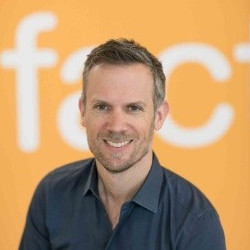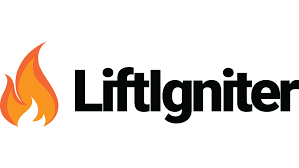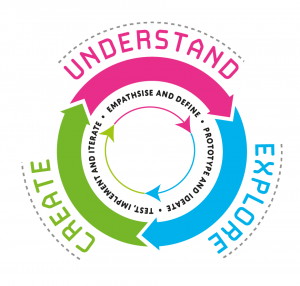Future of Media Conference
Where audience-centered data, AI, product development and revenue intersect
2-3 May 2019
Microsoft
555 California Street
Suite 200
Golden Gate East conference facility
San Francisco
The global conference is for media and data executives and practitioners who are seeking to drive revenue and expand audiences by leveraging data and artificial intelligence.
The 2-day event features a powerful format of general sessions with top-notch speakers from around the world, featuring case study formats that will inspire future strategies and innovation in media companies worldwide.
8 a.m. to 9 a.m.
Registration
9 a.m. to 9:40 a.m.
9:40 a.m. to 10:15 a.m.
The future of AI for media: Getting the ethics and policy right
As AI and data innovations infiltrate media and other industries, it is essential to consider the impact of these technologies on the media consumers and ultimately, on the reputations of media companies. Kay Firth-Butterfield, head of artificial intelligence and machine learning at the World Economic Forum in Davos, Switzerland, will explore the ethical and privacy implications for technologies like facial recognition, location-tracking, surveillance, privacy, security, and on the flipside, business and journalism opportunities. What are many governments considering as public policy to protect privacy and ensure ethical business practices in media-related circumstances?
10:15 a.m. 10:45 a.m.
Ethical AI: Creating experiences that people will love and trust
In this talk, industry analyst Susan Etlinger explores how AI fundamentally changes the relationship between people and organizations, lays out its risks and opportunities and demonstrates emerging best practices for designing human-centric , innovative and trustworthy brand experiences.
10:45 a.m. to 11:15 a.m.
Coffee Break
11:15 a.m. to 11:40 a.m.
Creating news experiences people will pay for
With digital advertising revenue increasingly going to the largest platforms, local news organizations have to pursue strategies that increase the value of a subscription and in turn, entice its audience to pay more. Ryan Nakashima, a former Associated Press technology writer, and now product manager of digital subscriptions for Bay Area News Group, outlines what that future could look like.
11:40 p.m. to 12:05 p.m.
Making good decisions with data
Simon Rogers, data editor at Google, will show a highly visual presentation on how data can facilitate good decision making, and how telling compelling stories can bolster decision-making. Rogers is the author of “Facts are Sacred” and a frequent speaker about the importance of data business decision making in general, and in journalism specifically.
12:05 p.m. to 1 p.m.
Panel Discussion: How media companies will fit in to the future data- and AI-driven media landscape, and how they can survive the mounting competition for personalisation, revenue and audience
1 p.m. to 2 p.m.
Lunch
2 p.m. to 3:40 p.m.
Future of AI-Driven Content and Product
2 p.m. to 2:25 p.m.
Why product teams at media companies are key to building a customer centric culture
With customer centricity becoming a key success factor for media organizations in building sustainable business models and outstanding news products, product teams are often at the core of this shift. They challenge legacy companies to engage with their customer and install new methods and workflows – and often face cultural obstacles in newsrooms. Zielina will outline a summary of the Do’s and Don’ts for the development of news media products.
2:25 p.m. to 2:50 p.m.
Tailoring content to mobile and audience, including Snapchat, using data
Mobile-first audiences are fickle and discerning. They make lightning-fast decisions about how to spend their time and will quickly move on if you don’t keep their interest. At Vertical Networks — a mobile-first content creation studio — data is the key to deciphering what content breaks through, and what creative best practices will keep them watching. From editing cadence and shot type, to subject matter and thumbnail images, mobile best practices can be surprisingly divergent from the “rules” of traditional and even digital media. In her presentation, Ms. Rosser will share how VN has used data-driven content development and creative optimization to fuel success and reach 40 million monthly viewers, including on Snapchat.
2:50 p.m. to 3:05 p.m.
Coffee break
3:05 p.m. to 3:35 p.m.
How SmartNews leverages AI to drive relevancy for readers
SmartNews is a San Francisco- and Tokyo-based company that uses machine learning to deliver the right content at the right time to its users through a curated, personalized news digest for more than 25 million users worldwide. The SmartNews App has been downloaded 40 million times. SmartNews algorithms evaluate millions of articles, social signals and human interactions to deliver the top stories that matter now. The content comes from trusted newsmedia partners in the United States and Japan. Jaroslovsky will talk about the power of machine learning in surfacing great journalism to those readers who want it.
3:35 p.m. to 4:20 p.m.
Panel discussion:
How media companies can build a bullet-proof content and product operation now and for the future
4:30 p.m. to 7 p.m.
Cocktail reception and BIGGIES Awards
9 a.m. to 9:05 p.m.
Welcome back
9:05 a.m. to 9:30 a.m.
AI Innovation in Search and Speech
Mr. Cai will discuss how Microsoft is developing artificial intelligence technologies for Bing News. The technologies are powerful solutions for media companies, as the results drive successful content engagement, targeted advertising and marketing best practices.
9:30 a.m. to 9:55 a.m.
Future of Revenue
Leveraging image recognition and deep learning to optimize advertising at Gannett
With more than 50,000 advertisements created per quarter across different advertising categories, Gannett’s designIQ center was looking to inform its design and truly understand what it means to make creative assets that perform on behalf of their clients. Using vast data on display creatives, hear about the innovative use of image recognition and deep learning to understand what elements in a creative influence advertising performance. And, learn about how those insights inform creative development. Siegel will also share some practical advice on how to deploy cutting edge AI and data techniques in your organization.
9:55 a.m. to 10:20 a.m.
How the San Francisco Chronicle and SF Gate use data and AI to drive revenue
Hearst is a media empire that owns newspapers, magazines and TV. Hearst-owned San Francisco Chronicle benefits from the conglomerate’s corporate data stockpile, by being able to identify user habits and interests by a broad range of user data across Hearst’s many properties. This allows Hearst to leverage the rich audience data to forge advertising business deals that involve targeting audiences programatically, as well as understanding and targeting subscription offers to audience members. The audience data allows Hearst to identify “intenders”, or those who have the propensity to buy, which is golden when selling subscriptions and wooing advertisers. Ms. Neal will give case studies of how the Chronicle and SF Gate leverage data to drive revenue, and how they value data privacy above all else.
10:20 a.m. to 10:35 a.m.
Coffee break
10:35 a.m. to 11 a.m.
Man and machine formula is secret to McClatchy’s revenue success
The Sacramento Bee, flagship operation of the McClatchy news media chain, has pioneered a formula for revenue success by using a proprietary combination of customer subscription data and other data-driven resources to enable profitable relationships with local advertisers. The Bee has built indispensable relationships with local advertisers by enabling them to have greater insights into their customers and by creating new ways to acquire new customers and re-engage old customers. Kunken and Williams will give case studies about how this formula pinpoints their advertisers’ best customers, and how they enable successful, targeted advertising campaigns using a winning combination of machine magic and human finesse.
11 a.m. to Noon
Panel discussion
Noon to 1 p.m.
Lunch
1 p.m. to 3:40 p.m.
Future of Enabling Technologies
Leveraging machine learning to automate image production and improve searchability for users
1 p.m. to 1:25 p.m.
KQED: Adapting for a changing audio space
KQED is the most listened to radio station in the Bay Area, and one of the most popular public radio stations in the United States. Chief Digital Officer Tim Olson will talk about how KQED is adapting for a changing audio space of voice assistants, speakers and UX. Olson will define the audio strategies’ business promise and peril, and the creative opportunities of these new platforms.
1:25 p.m. to 1:50 p.m.
Leveraging machine learning to automate image production and improve searchability for users
Filipkowski will describe how Adobe uses artificial intelligence and machine learning technologies to develop:
- Content Intelligence and AI services that help publishers manipulate images for efficient reuse, automate production and personalise at scale.
- Human-centered design to develop machine learning products
- Image content: automatically adds image descriptors including metadata, design elements and captions to existing assets
- Image quality: Score image quality on professional dimensions such as color, depth of fields and rule of thirds
- Content position: Automatically crop and mask images with content-award intelligence to create images to brand specifications and channel requirements
- Video content: Quickly generate metadata including action descriptors for video
1:50 p.m. to 2:15 p.m.
Cultivating a data culture — one step at a time –at the Los Angeles Times
The LA Times data team set a goal to help all teams within the company – editorial, marketing, events, technology, product, and business – to embrace the power of data culture. Standardized messages about audience and subscriber data will align these departments and help them focus on the same overarching business objectives: to expose millions of new readers to the LA Times journalism and brand, to convert readers to subscribers, and to retain existing subscribers by continuing to serve them well. Ms. Peters will describe how the end game is to use data to align the newsroom with business goals, and in so doing, creating a data culture that will help us better serve LA Times current readers, discover new audiences, and create a sustainable business so that they can continue to deliver excellent journalism for generations to come.
2:15 p.m. to 2:30 p.m.
Coffee Break
2:30 p.m. to 2:55 p.m.
The future of enriching audience data with location data
Media companies have incredible amounts of data at their fingertips, but many aren’t quite sure how it can be used, or how to best apply it for actionable success. Rob Jonas of Factual will discuss data enrichment, using real-world examples to showcase ways in which data decision makers can enhance their first-party data with a location layer in order to better understand and serve their audiences.
2:55 p.m. to 3:30 p.m.
Panel discussion
Data & AI for Media Week Partners:











































